Adrian Mourby leaves the planes and trains behind and sets out to reach La Serenissima from a new perspective – Venice by bike & boat…
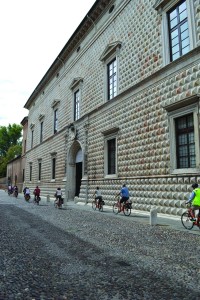 I had never heard of Chioggia until I joined a group of cyclists cycling from Mantua to Venice. I’d never thought about cycling around Italy either until now but it really is the best way to see the countryside. In a car everything flashes by too quickly. On foot it can feel as if the view ahead hasn’t changed for hours.
I had never heard of Chioggia until I joined a group of cyclists cycling from Mantua to Venice. I’d never thought about cycling around Italy either until now but it really is the best way to see the countryside. In a car everything flashes by too quickly. On foot it can feel as if the view ahead hasn’t changed for hours.
Besides, cycling takes you places – along rivers, through fields and in and out of city backstreets where cars and coaches cannot go. Chioggia was a case in point. Following the example of my hearty Norwegian companions I zipped along sidestreets and zoomed over canal bridges until we reached our boat, moored behind the fish market. Here these hearty Scandinavians helped my wife and I stow our bicycles on board the Ave Maria and then we were invited to join them for gin and beer in the dining room.
When not cycling or sightseeing, our international party slept and ate on the Ave Maria, a purpose-built canal boat commissioned by Girolibero, the Italian company that leads cycling tours all over Italy. In all we covered 150 km over five days and every night we would rendez-vous with the Ave Maria and return our cycles to their special racks. It’s a truly great way to see to explore the Po, Brenta and Adige rivers.
The next morning, having slept off yesterday’s 40km, I joined our group for a walk round Chioggia, at the southernmost end of the Venetian lagoon. We were led by Martina, our tiny, tanned tour guide, who took us through the fish market (the biggest in northern Italy) and warned us about Chioggia. “The people here are slightly mad. You must never say that Chioggia is like Venice. They don’t like Venice. They were here first.”
Venetian Lion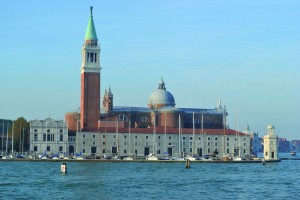
The problem is that Chioggia is like Venice. It has canals and palazzos and a cathedral designed by the man who built Santa Maria della Salute. It even has a very small Venetian lion on top of a column (known locally as “the cat” because the sculptor got the dimensions wrong). Chioggia is what Venice would be like today if it hadn’t become Italy’s major tourist attraction. Instead of gondolas it has fishing boats that come into the centre of the city pursued by gulls and, unlike Venice, it boasts a few narrow streets of traffic that arrive here across bridges from the mainland and get horribly snarled up, horns blaring.
“As bad as Naples,” said Martina as she brought us to meet Dr Luciano Bellemo, a jovial historian with eccentric teeth who is custodian at the clocktower of Chiesa di Sant’Andrea, which was constructed in 1386. On the tower’s second floor Luciano showed us cupboards full of vellum texts. He unfolded one crackling document and pushed it into the hands of a couple from Seattle. “This dates from the mid-15th century,” he announced. “Before Columbus found America!” Other papers and parchments were passed around, and I’m struck by the thought that in most countries these artifacts would be behind glass, but here they’re just bundled into cupboards.
We were led to the fifth floor (past a picture of local saint, Pope Pius X) to find the ancient clock itself, built using two large white rocks as counterweights. Then to the belfry where we could see all of ancient Chioggia filling this tiny island with fine views north to the Alps. Suddenly 10am sounded and the peal of bells was deafening. My fellow cyclists headed rapidly downstairs but I couldn’t resist waiting till last and shouting “Sanctuary!” Dr Luciano waited for me with a smile on his amiable face. I doubt I was the first to channel Quasimodo here.
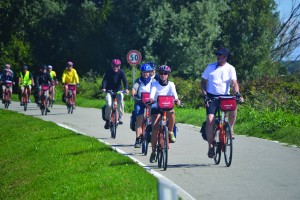 Back at the Ave Maria the crew of four were preparing to island-hop us on to Pellestrina, one of the long spits of land that act as a barrier between the Venetian lagoon and the Adriatic. The boat is very new and a big, low solid creature that plods along at 13 kmh. Captain Luciano, who also waits at table in the evening, dropped us just south of the actual village of Pellestrina, where we offloaded our 40 orange bikes. As I re-attached my panniers, one of the taller Norwegians clapped me affably on the shoulder and we set off again behind Martina.
Back at the Ave Maria the crew of four were preparing to island-hop us on to Pellestrina, one of the long spits of land that act as a barrier between the Venetian lagoon and the Adriatic. The boat is very new and a big, low solid creature that plods along at 13 kmh. Captain Luciano, who also waits at table in the evening, dropped us just south of the actual village of Pellestrina, where we offloaded our 40 orange bikes. As I re-attached my panniers, one of the taller Norwegians clapped me affably on the shoulder and we set off again behind Martina.
Our route was along the sturdy 18th-century sea wall while the Ave Maria headed for Lido, where it would await us. At the brightly painted village square Martina called a halt in case anyone wanted a mid-morning coffee. I used the time to look at the church of Ognissanti and the tall stone wall which had kept Pellestrina inhabitable for more than two centuries.
Clams From The Lagoon
Resuming our route north on the lagoon-side we passed fishermen working on their clamboats. Last night huge prow-mounted conveyor belts had scooped up clams from the lagoon and now they were being bagged for market. The guys clearly found it hilarious when several women in our party dismounted to photograph them at work.
And further on still to the Venetian Fort of San Pietro in Volta, built to guard the lagoon from Genoese and Turkish attack. The cycling was very easy: few cars and no gradients whatsoever.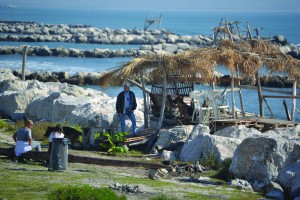
Finally we reached the ferry for Lido Island and piled on board, 40 bikes, several cars, two buses and an ambulance for the 10-minute journey to the village of Alberoni, which is named after the trees that fishermen could see from the Adriatic and use to navigate themselves towards the lagoon.
We assembled again on the quayside of Porto degli Alberoni and followed Martina as far as Malamocco, which is a gorgeous little village hidden behind the gracious tree-lined sweep of Lido’s Art Nouveau’s avenues. Theodatus, the second doge of Venice (742-755 AD), moved the ducal seat here from Eraclea and it remained in Malamocco until 812 AD, when Venice was resettled across the lagoon in Rialto. Malamocco has a parish church, now dedicated to Santa Maria Assunta, that dates in part to the 12th century, a 15th-century Palazzo del Podestà in Gothic style and the smallest “Piazza Maggiore” I have ever seen.
It was touching to think that La Serenissima had begun quite so modestly. During the period of the Republic, we were told, Malamocco was one of nine districts of the Venetian Dogado.
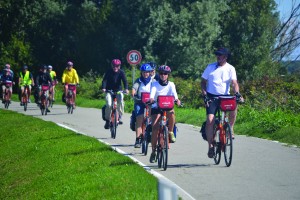 Now we were cycling the final stretch up the Adriatic side of Lido Island as far as the Excelsior Hotel. The Excelsior’s private beaches push the cycle route off the coast and into the centre of the island, past the new Film Festival Building and the Hotel des Bains – where Death in Venice was set, written and filmed. What a shame it’s all boarded up at the moment.
Now we were cycling the final stretch up the Adriatic side of Lido Island as far as the Excelsior Hotel. The Excelsior’s private beaches push the cycle route off the coast and into the centre of the island, past the new Film Festival Building and the Hotel des Bains – where Death in Venice was set, written and filmed. What a shame it’s all boarded up at the moment.
Then it was time to get on board the Ave Maria again for a final trip across the lagoon and into the Bacino San Marco so that Captain Luciano could show us Venice in all its late summer glory.
We turned in front of San Giorgio di Maggiore and chugged past Arsenale towards our final mooring on the island of Certosa. Venice is a city I always love to visit, I’ve arrived by car, plane and train but this time the actual travelling had been as much fun as the arrival.
Getting Around Venice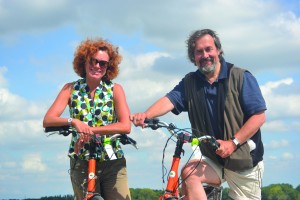
➤ Between the pedestrians, the bridges and the canals it’s pretty much impossible to cycle in Venice itself, though you can enjoy some pedal power on the Islands of the lagoon in low season. The best way to explore the city is aboard the Vaporetto waterbuses. A single journey costs €6.50, or invest in a pass if you are going to be in the city for more than a few days. As well as being the easiest way to get around, the journeys can take the form of sightseeing cruises, or just the chance to have a nice sit down away from the crowded, pedestrian-filled streets. Buy passes at the train station, or any vaporetto ticketing kiosk.
